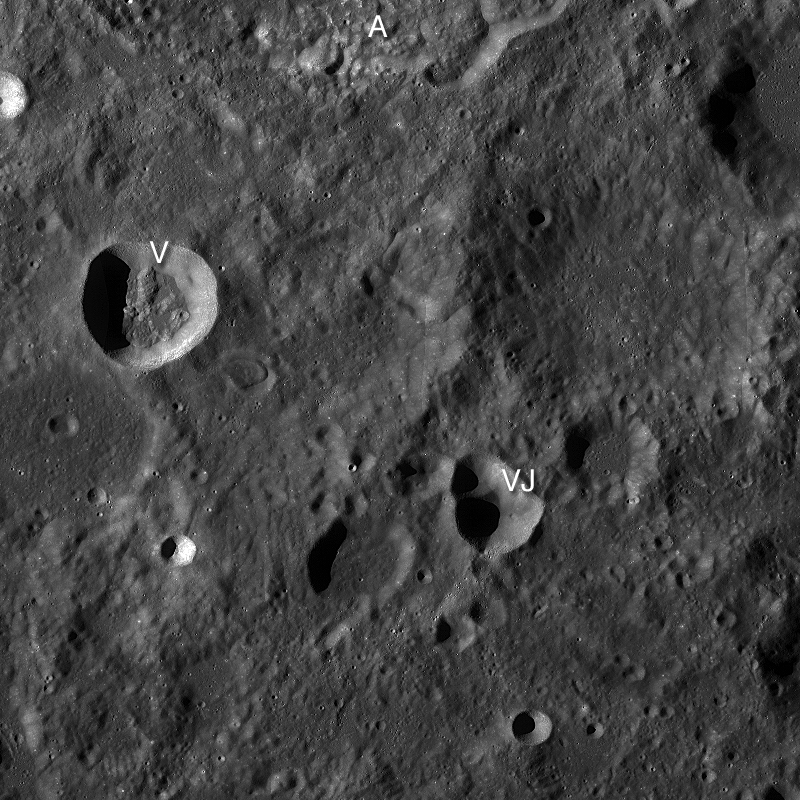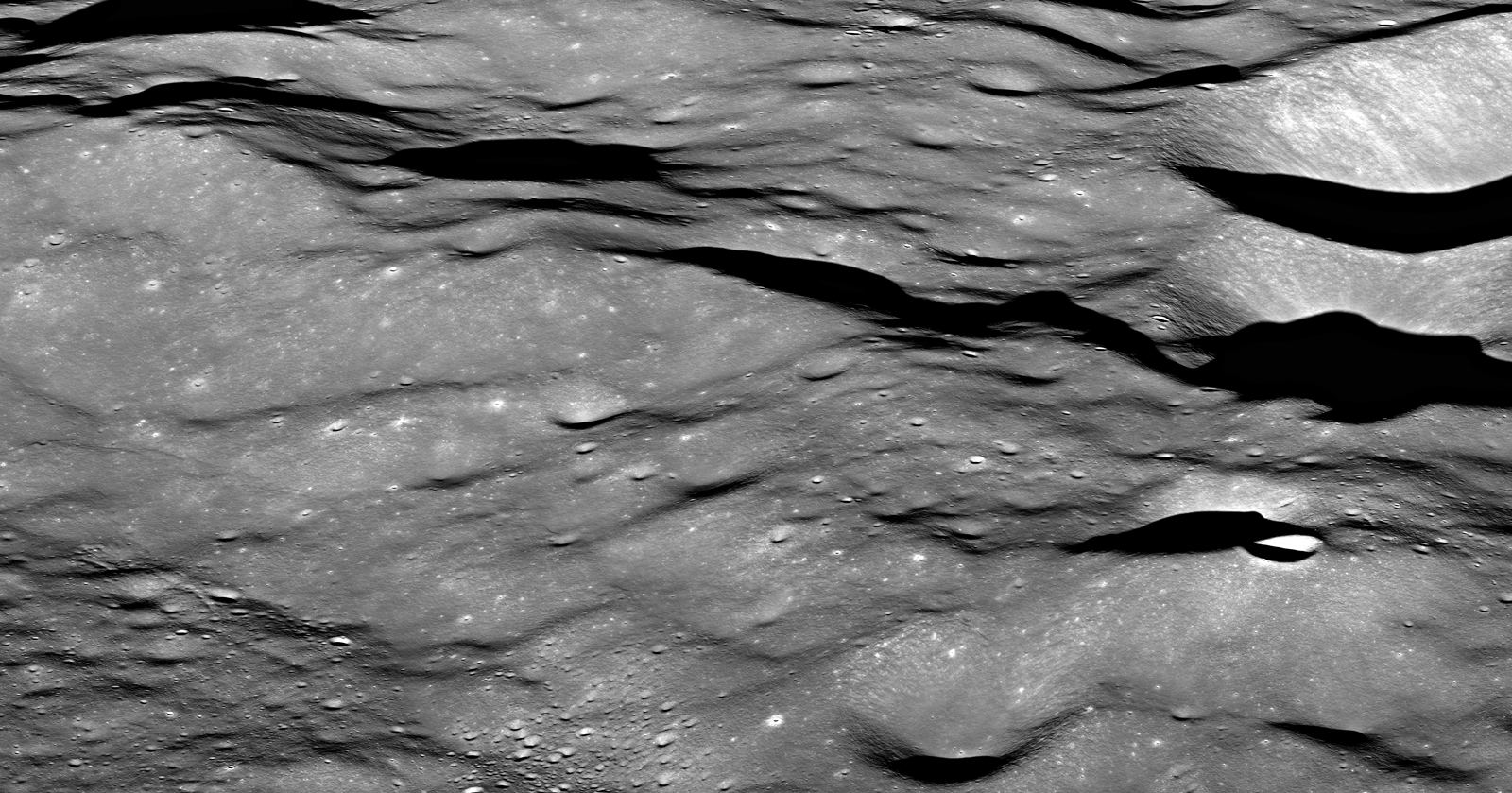
Extreme oblique views are a luxury with the LRO mission, since most instruments (including LROC) need to be pointed nadir (straight down) most of the time. Also, thermal concerns limit when LRO can look off to the side. The LROC targeting team closely monitors when opportunities arise to target extreme slews and acquire spectacular views (Bhabha crater).
The region around Vertregt J (21.46°S, 174.32°E) is typical of the highlands - hilly and rugged. About seventy percent of the Moon is mapped as highlands, yet this most common terrain type is only poorly sampled. Only one Apollo mission explored a true highland target: Apollo 16. As it turns out, results from the Clementine and Lunar Prospector missions showed lunar scientists that the chemistry of Apollo 16 rocks differs significantly from most the highlands. Murphy's law at work! Lunar scientists need samples from other highland targets, especially inside the South Pole Aitken Basin (SPA) basin, to get a better handle on the origin of the lunar crust and the history of asteroid bombardment early in our solar system's history.
Explore at full resolution the Vertregt J oblique view.
Also visit the oblique view taken a few minutes later across the center of Aitken crater.
Explanation of "lettered craters" on the Moon.
Published by Mark Robinson on 19 January 2011

